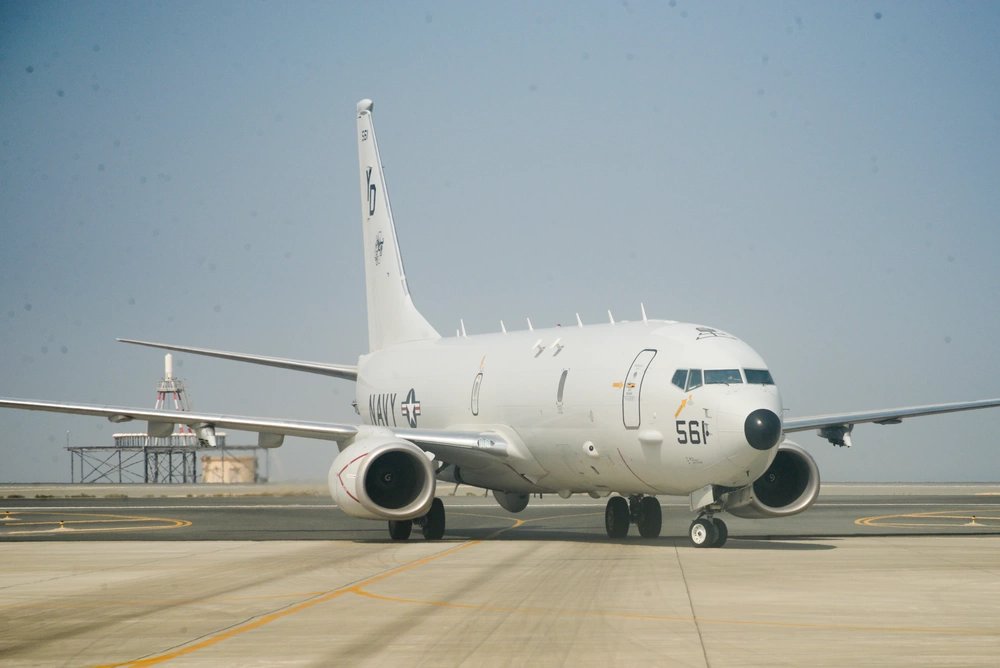

The Lockheed P-3 Orion served as the Navy’s anti-submarine warfare aircraft for most of the Cold War. In service since 1962, the turboprop plane was getting long in the tooth by the 1980s when the Navy began researching its replacement. At the turn of the millennium, the Navy started the Multimission Maritime Aircraft program that saw Lockheed Martin, BAE Systems, and Boeing submit competing designs. On May 14, 2004, Boeing was selected as the winner with its proposal based on the 737-800.
On March 30, 2005, the project was designated the P-8A. The P-8 is built on Boeing’s 737-800ERX commercial airliner, an extended-range version of the extremely popular narrowbody aircraft. It features a strengthened fuselage for low-altitude operations. In order to power the suite of onboard electronics, the 737’s nacelles and wing mountings had to be redesigned to accommodate more powerful electric generators.
The P-8 carries the Raytheon APY-10 multi-mission surface search radar and an acoustic sensor system. In addition to the two flight crew, the P-8 carries five operators. Two Naval Flight Officers and three enlisted Aviation Warfare Operators sit in a sideways row at their stations facing the cabin’s port side. Behind the wing, the P-8 features a short bomb bay to release torpedoes. Anti-ship missiles are carried under the wings.

Like the P-3, the P-8 is a land-based maritime patrol aircraft. The Navy has received 112 P-8As as of July 2022 and bases them out of NAS Jacksonville, Florida; NAS Patuxent River, Maryland; and NAS Whidbey Island, Washington. P-8 Air Test and Evaluation Squadrons are based at Pax River. Patrol Squadrons deploy from Jacksonville and Whidbey Island to allied bases across the globe like Italy and Australia to support operations overseas.
Since it reached Initial Operational Capabilities status in 2013, the P-8 has taken part in intelligence, surveillance and reconnaissance missions including the search for Malaysian Airlines Flight 370. Notably, a P-8 positively identified the Russian warship Moskva in the Black Sea in April 2022. The ship’s identity was confirmed by U.S. officials to Ukraine as part of an intelligence-sharing effort to help the country defend itself. After positive identity was made, the Moskva caught fire and sunk with Ukraine claiming a successful missile attack on the Russian warship.

Outside of the United States, the P-8 is also flown by the Royal Air Force, the Australian Royal Air Force, the Indian Navy, and the Royal Norwegian Air Force. It has also been ordered by the Royal New Zealand Air Force, the Republic of Korea Navy and the German Navy. The U.S. Navy lists the P-8A’s projected Full Operational Capabilities date as 2023.
